Mod Details
PremiumYes Difficulty



 Mod ID1740
Creditevilution
For
Mod ID1740
Creditevilution
For Linkhttps://dev.evilution.co.uk/mod/451-ed-battery-cell-charging.htm Copy to Clipboard
Linkhttps://dev.evilution.co.uk/mod/451-ed-battery-cell-charging.htm Copy to ClipboardTraction Battery Voltage
The 451 ED 400 volt traction battery contains 93 separate cells, all wired in series. At an absolute maximum, lithium ion cells should be charged to no higher than 4.2 volts.
93 cells at 4.2 volts = 390.6 volts but they call it a 400 volt battery.
However, charging lithium ion batteries to their maximum voltage will seriously affect their longevity, so the smart will charge them to an approximate maximum of 4.1 volts just to make them last longer. When the car says that the battery is low (0 miles left), the battery cells will still have 3.5 volts in each. This is again to increase longevity. Considering that the car uses only 0.6 volts from each cell to drive the car about 65 miles is impressive.
Side Note
If smart weren’t that bothered about battery longevity, they could safely charge the cells to 4.2 volts each and discharge them down to 2.5 volts if the cooling loop could keep them below 55 degrees celsius. That would give an estimated real world range of 216 miles but the cell chemistry would deteriorate and after about 3 years, you’d see a serious loss in real world distance. Even a 4.2v to 3v range would have given about 150 miles of range.
Individual Cell Charging
If you have completed a battery cell test and noticed that some of the individual cells have a lower voltage than the others, you might want to consider topping these cells up individually to bring the voltage up closer to the rest of the cells in the pack. Alternatively, if you have opened the HV battery pack, you can test all of the cells manually and adjust the voltages of any low cells.
First of all, the battery can pack a 390 volt punch in the balls with enough amperage to blow fingers off, cause skin burn, stop your heart and kill you. So if you are in any doubt regarding your abilities, just don’t continue.
However, you can get heavy duty high voltage gloves like these. These particular ones are a bit over kill as they are rated for 10,000 volts. You can get 1000 volt rated gloves that are cheaper and more flexible. You are supposed to wear these underneath leather gloves to protect them. If you are sensible, you can forget the gloves. If you keep 1 hand behind your back and only ever touch the battery with 1 hand, there is no way the voltage can go across your heart and kill you. Really the worst that could happen is some fingers missing.
You do have to be really trying to be shocked since the terminals for each bank are quite far apart.

This is the HV battery with the top cover removed. It’s 3 packs of 31 batteries joined together with busbars.
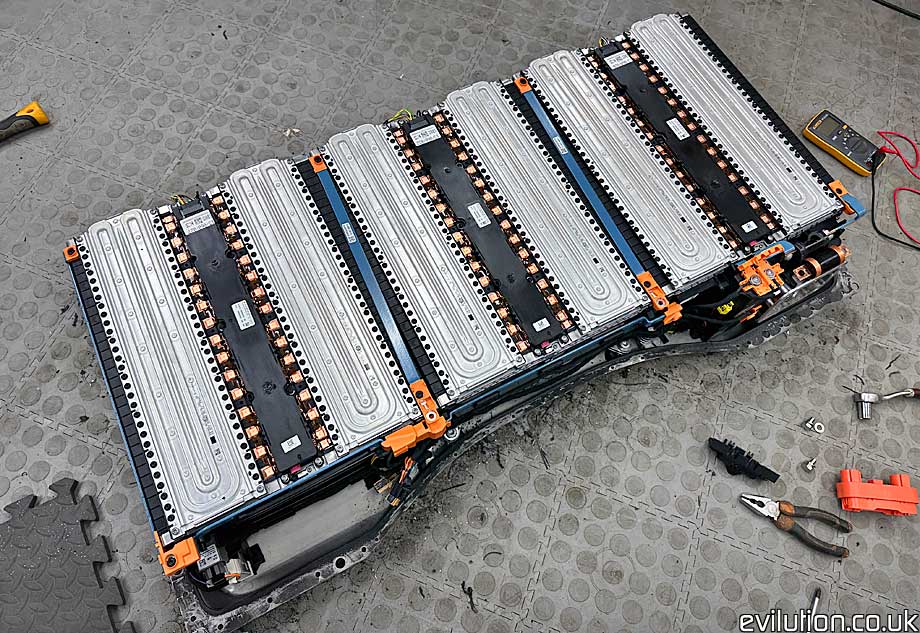
I have been reliably informed by Askold K from GoSmart that the first thing you should do before anything is to disconnect the current sensor. Don’t reconnect this until right at the very end when you are about to reseal the battery. This sensor is very sensitive and there are no replacements. If you don’t follow this recommendation, there’s a good chance you’ll get a BMS error code of P0AC029. In which case, you’re screwed.
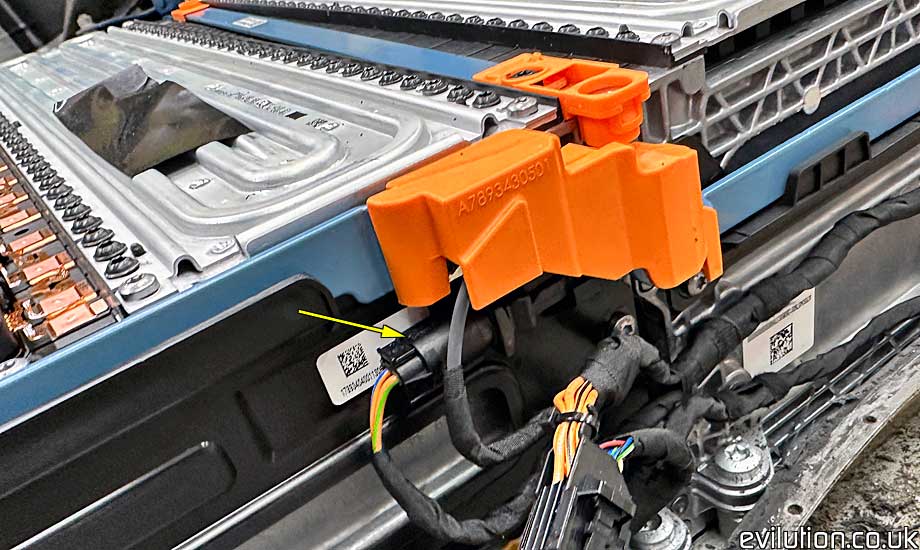
If you use a Torx25 screwdriver and remove the bolts shown below…
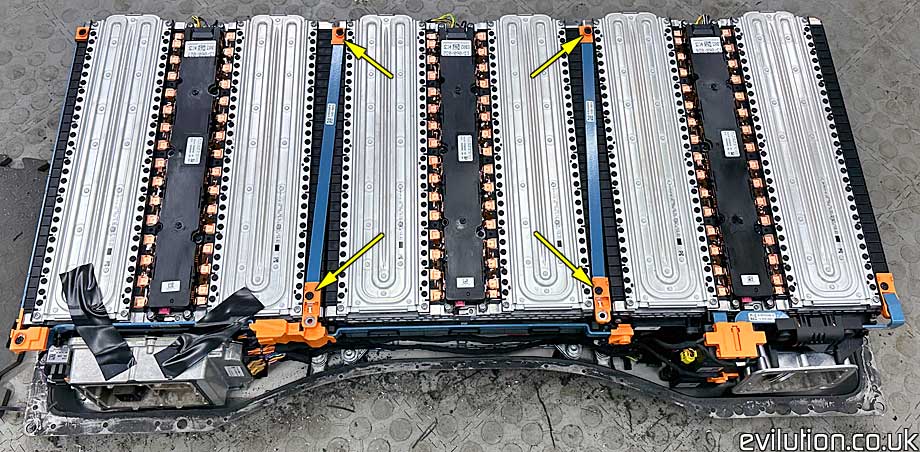
…you can remove both busbars
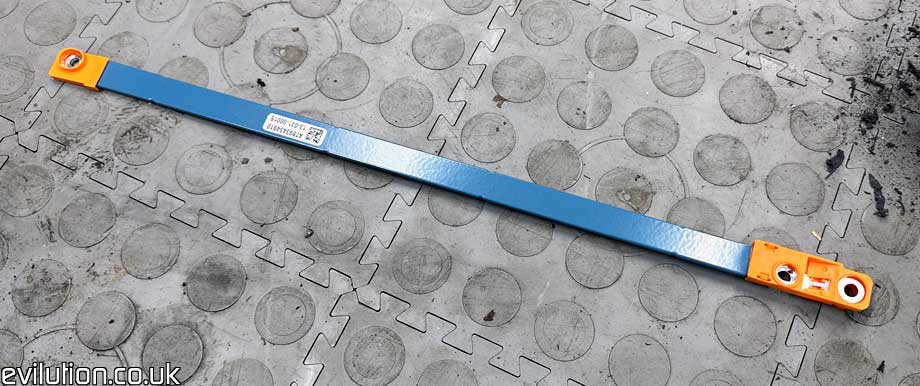
Now, instead of having a single 390 volt battery, you have 3x 127 volt batteries. It’s a little safer but don’t get complacent. Here’s the battery with the 2 busbars removed.
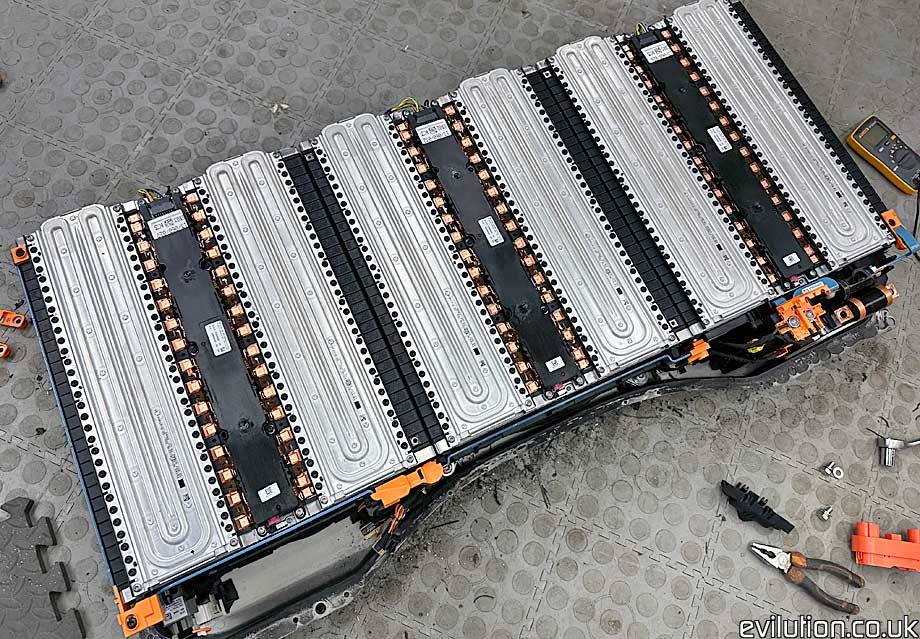
Time to test all of the cell voltages.


